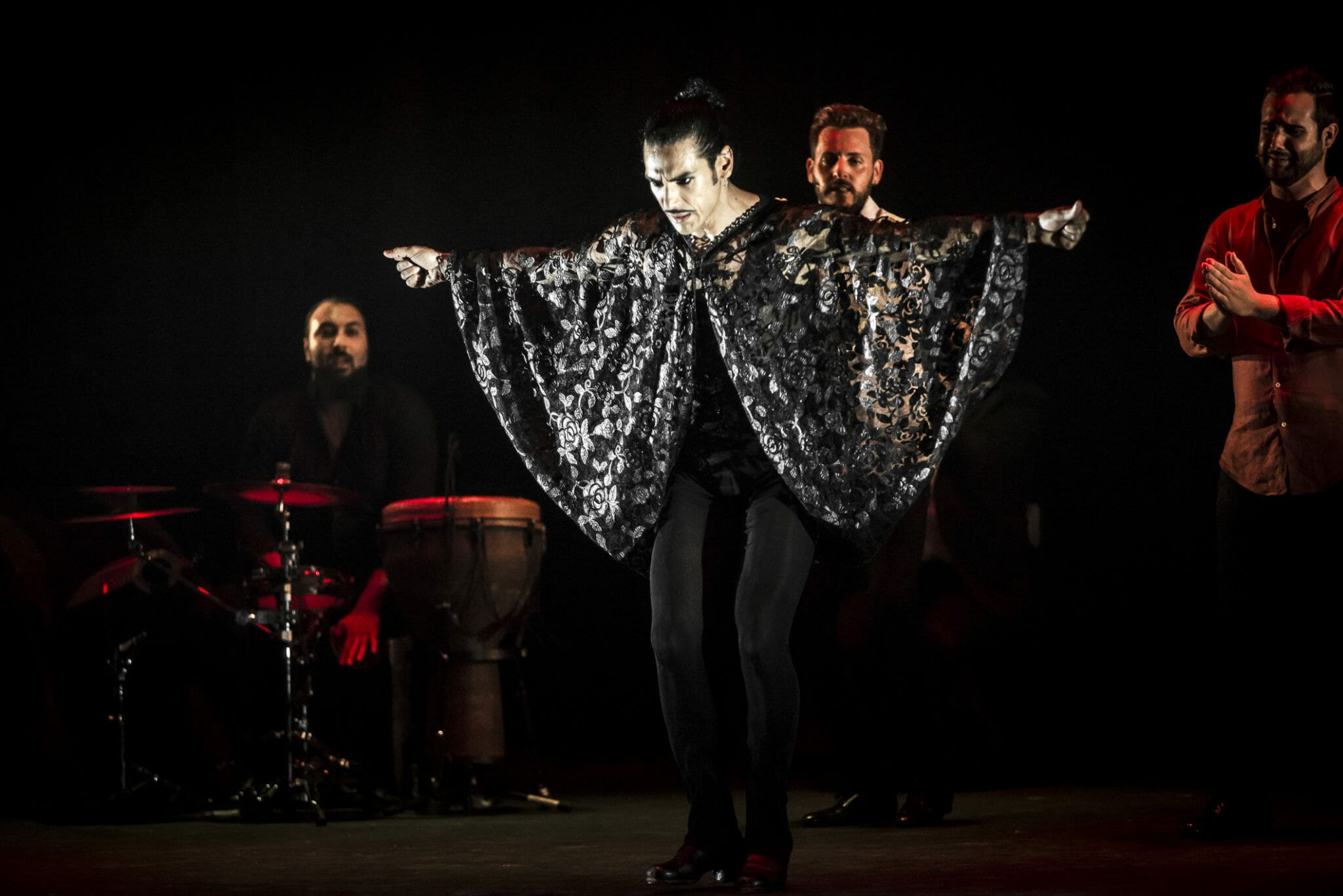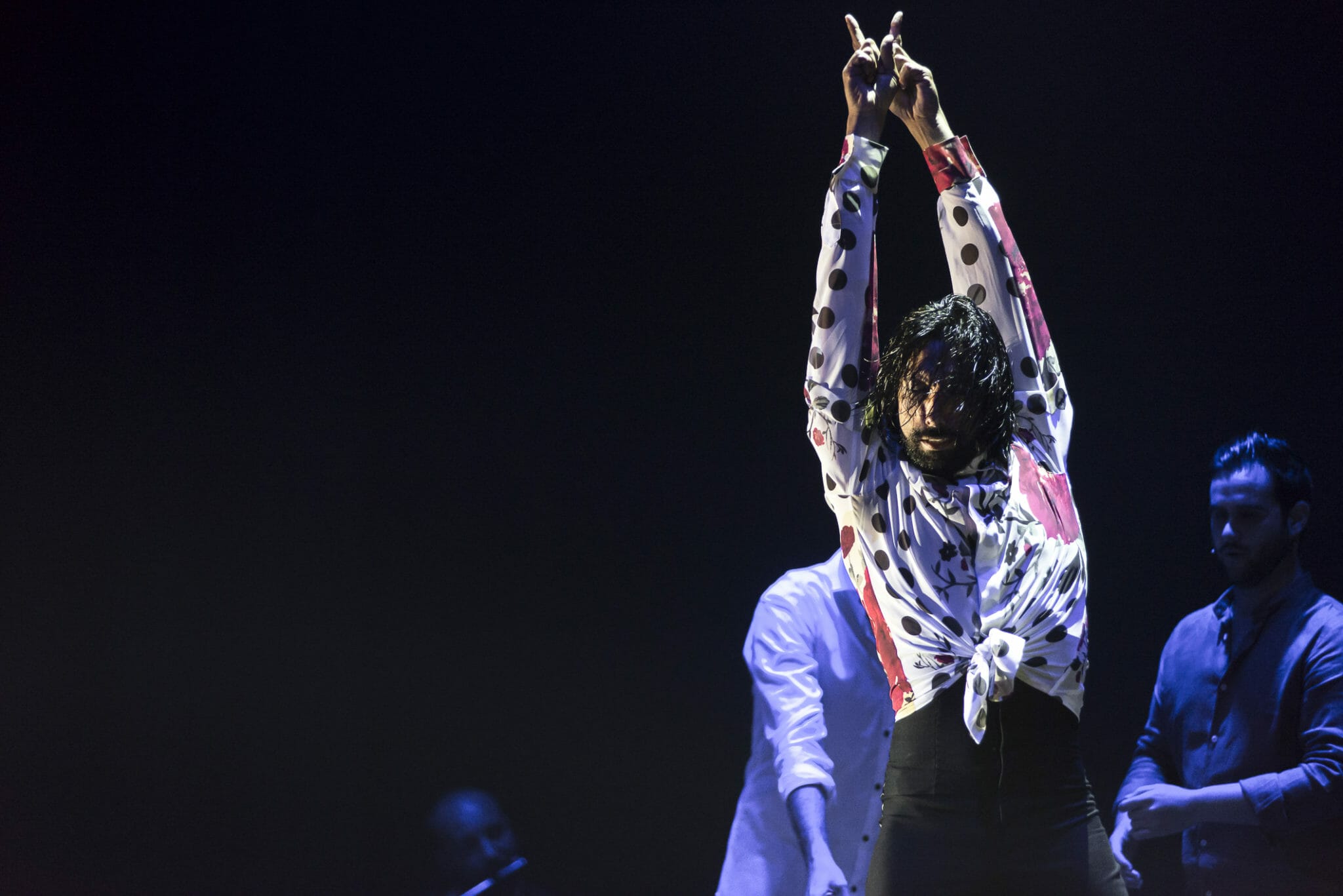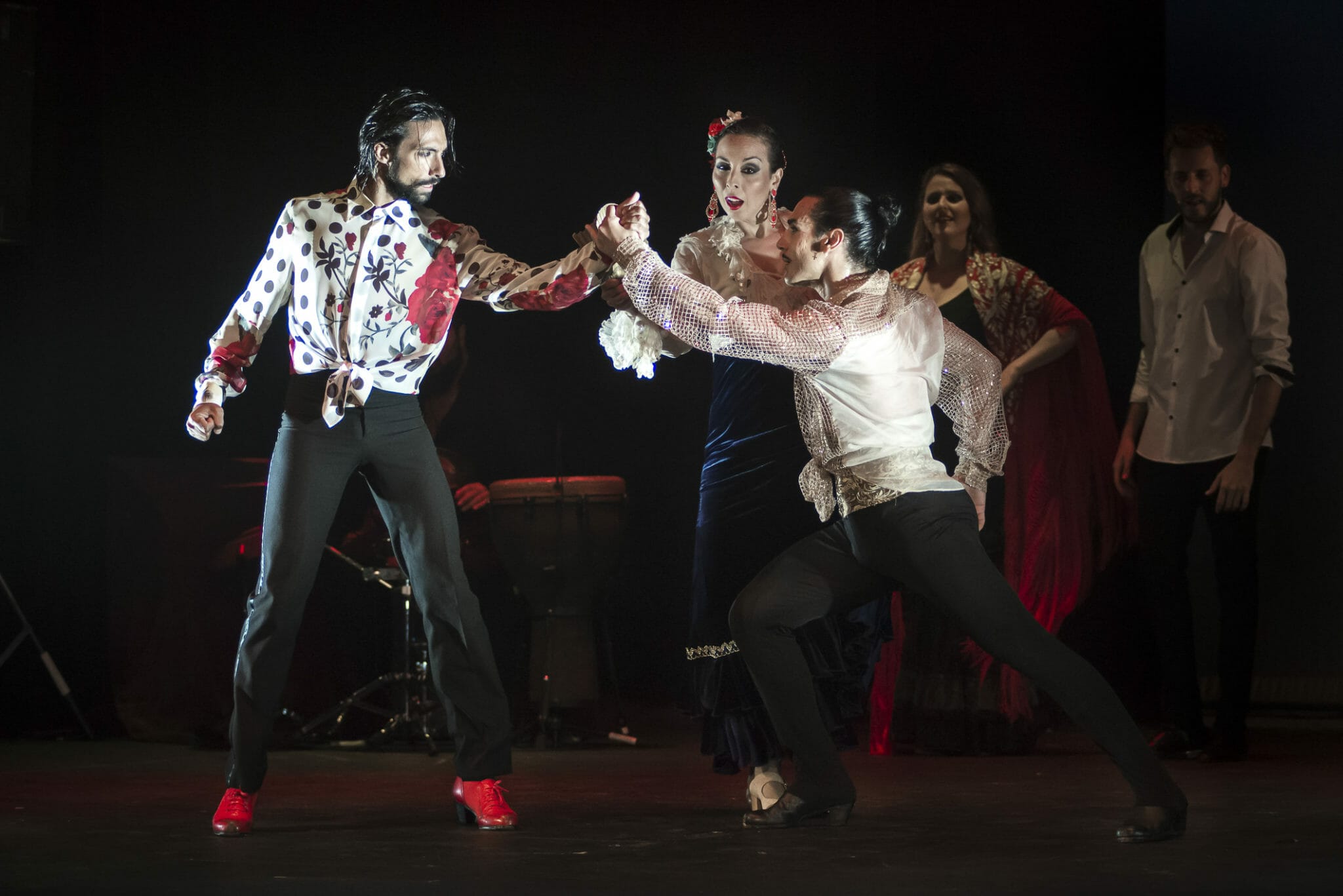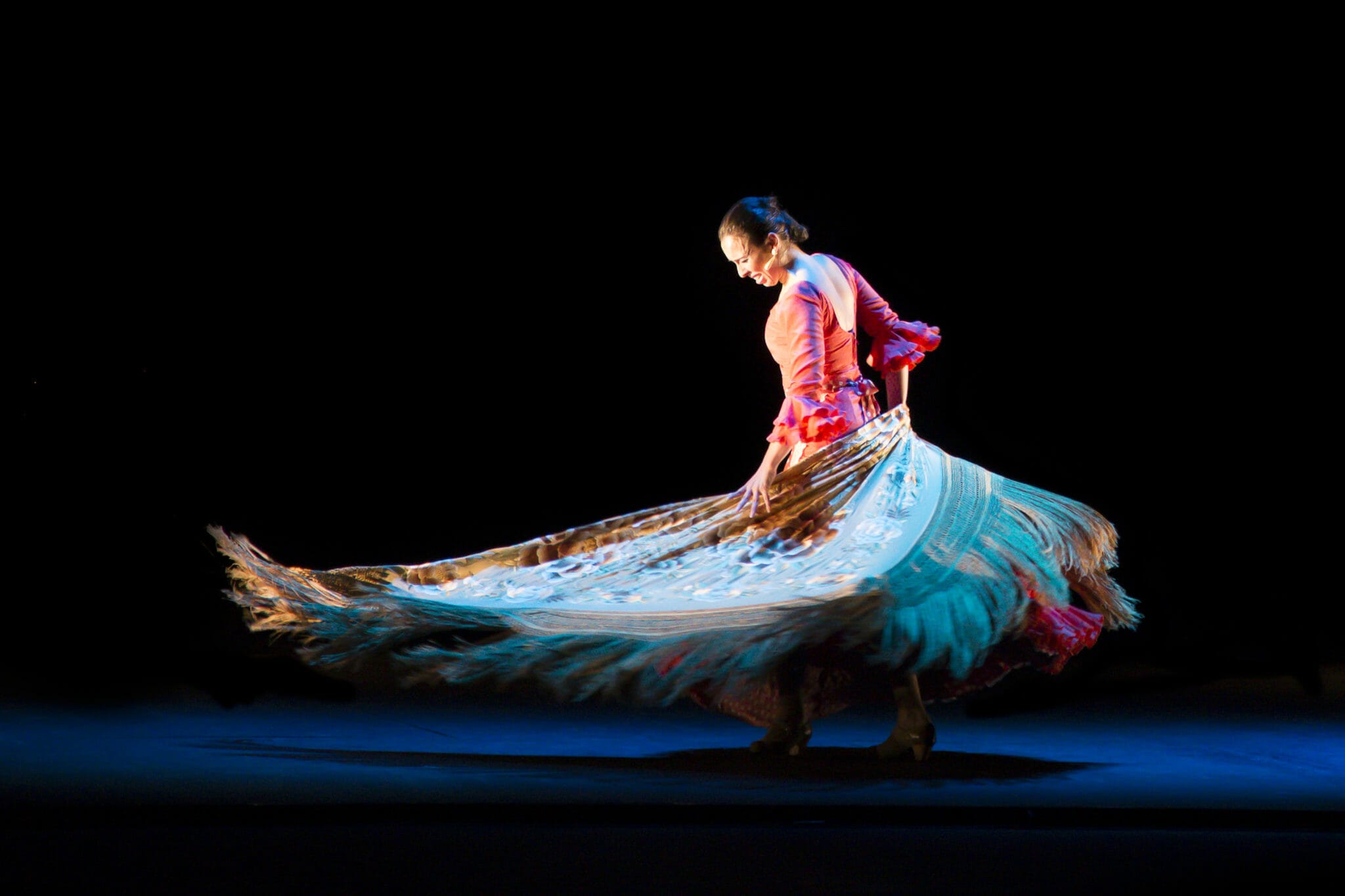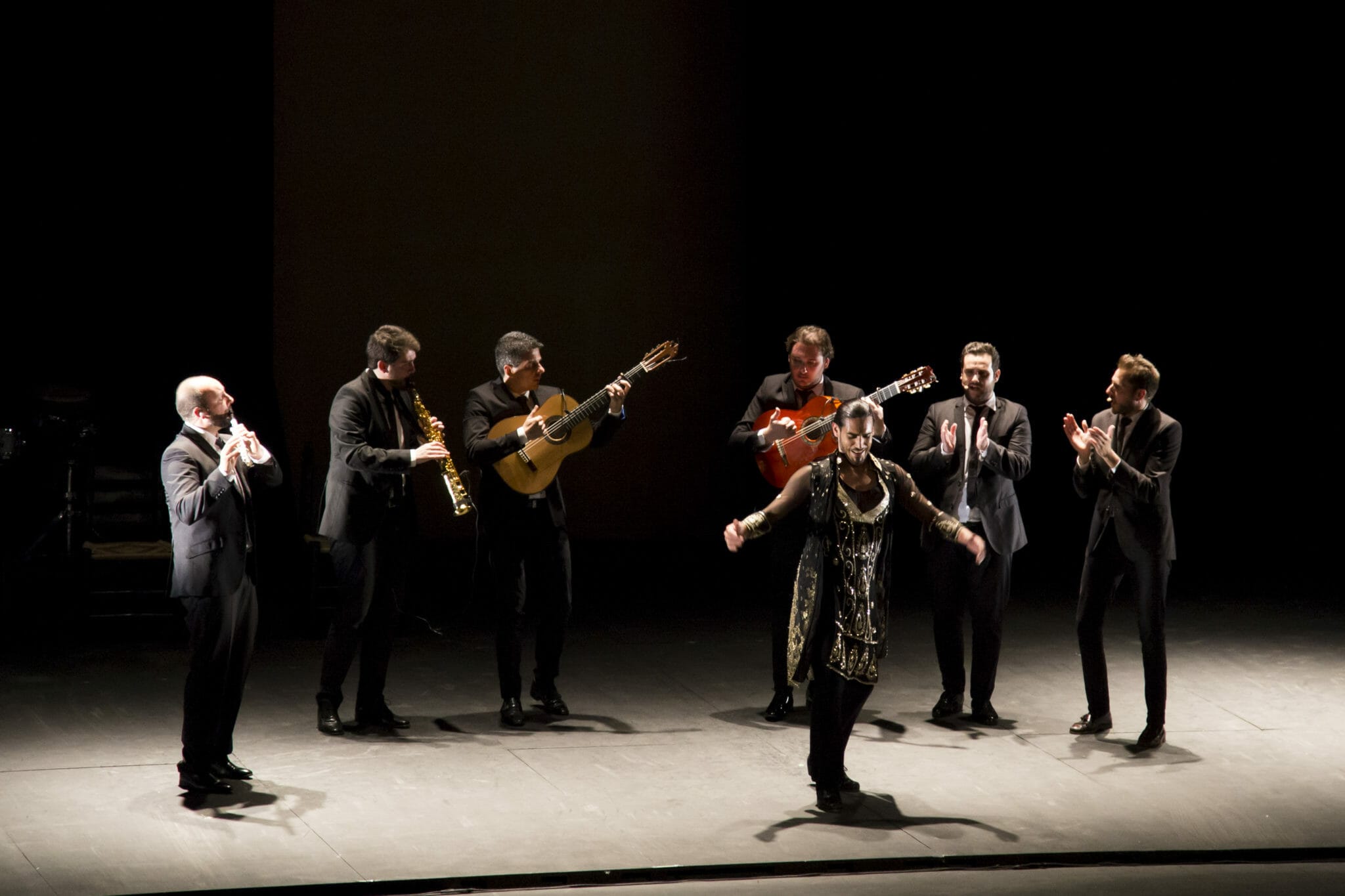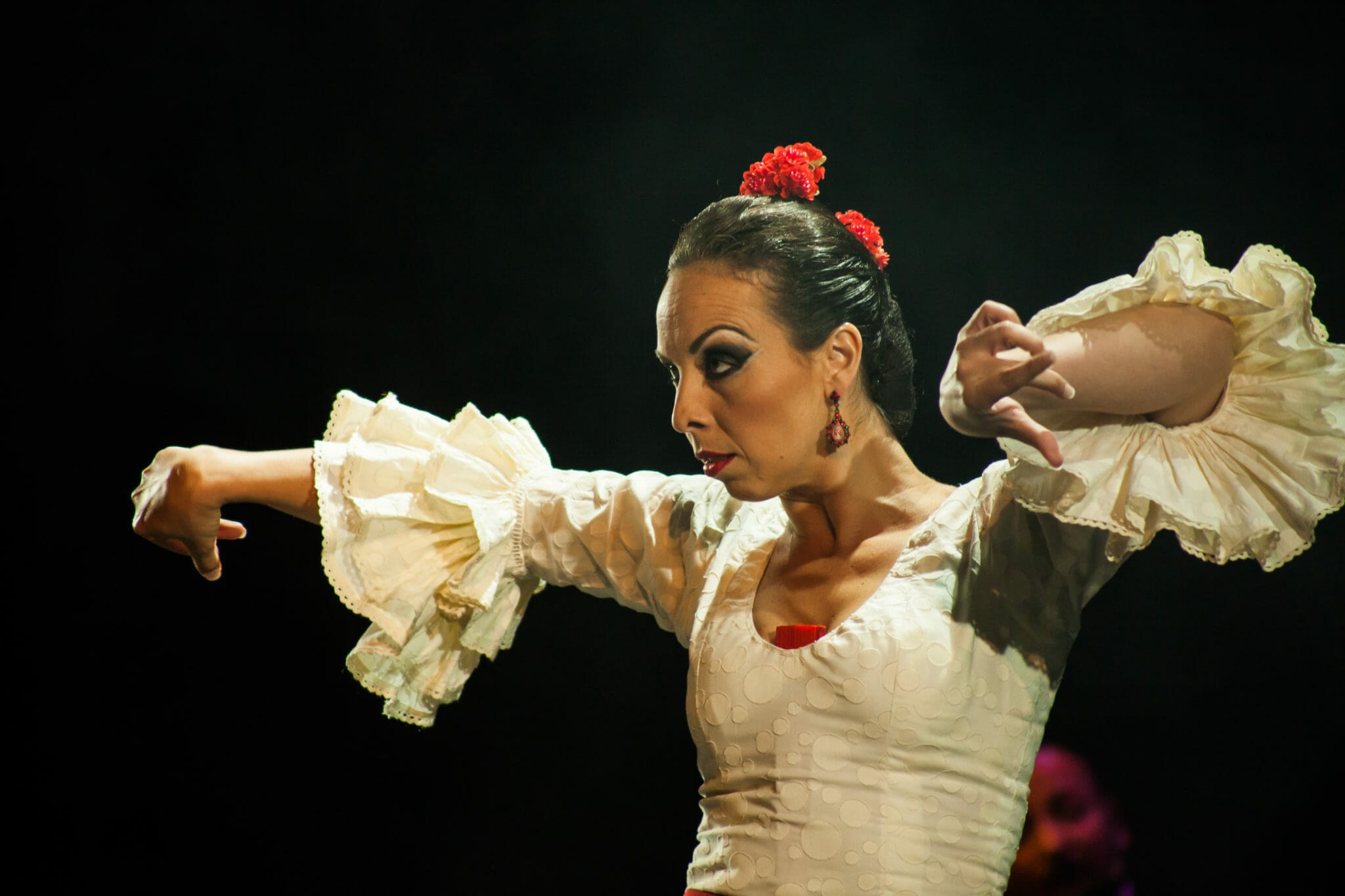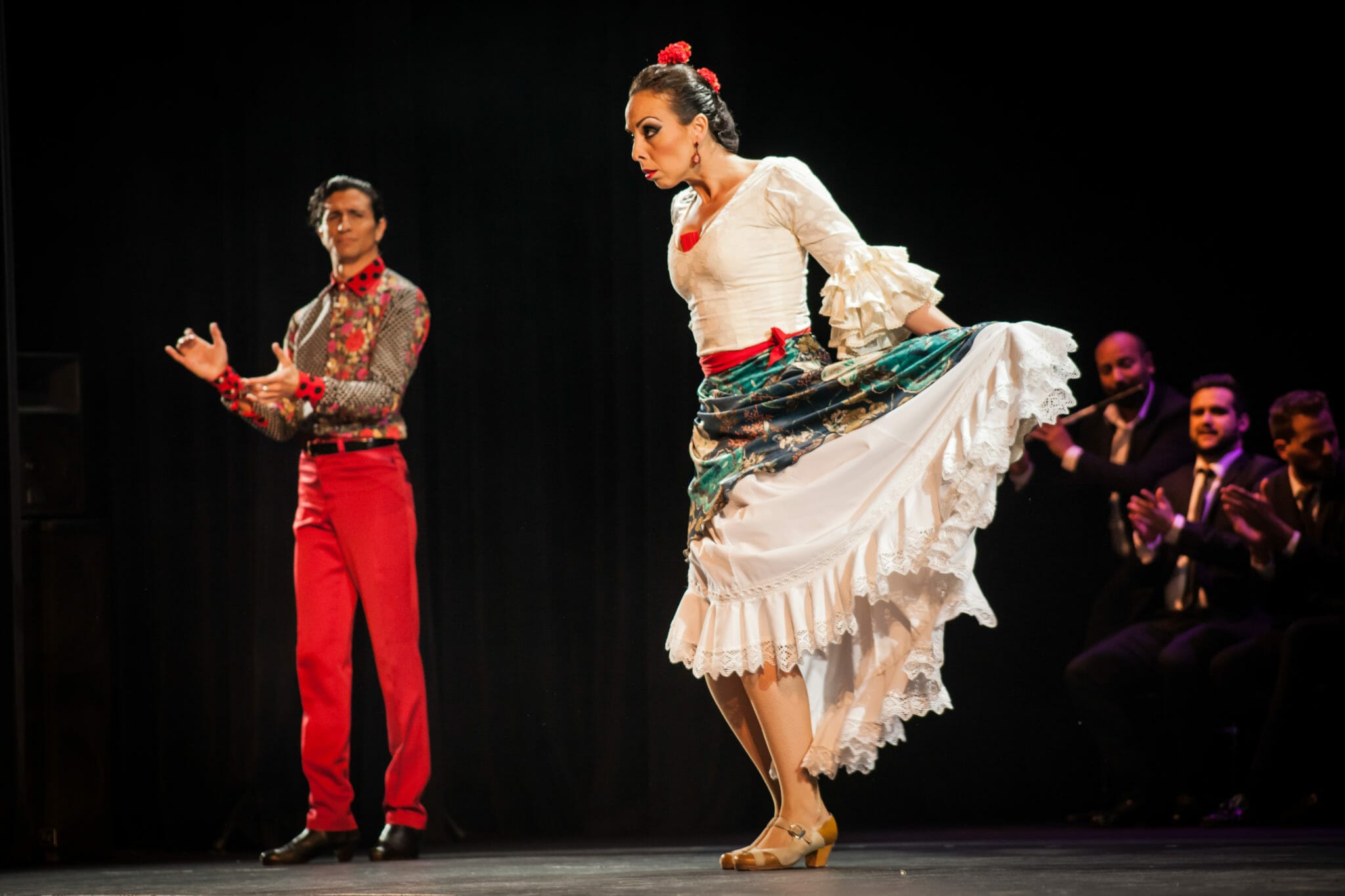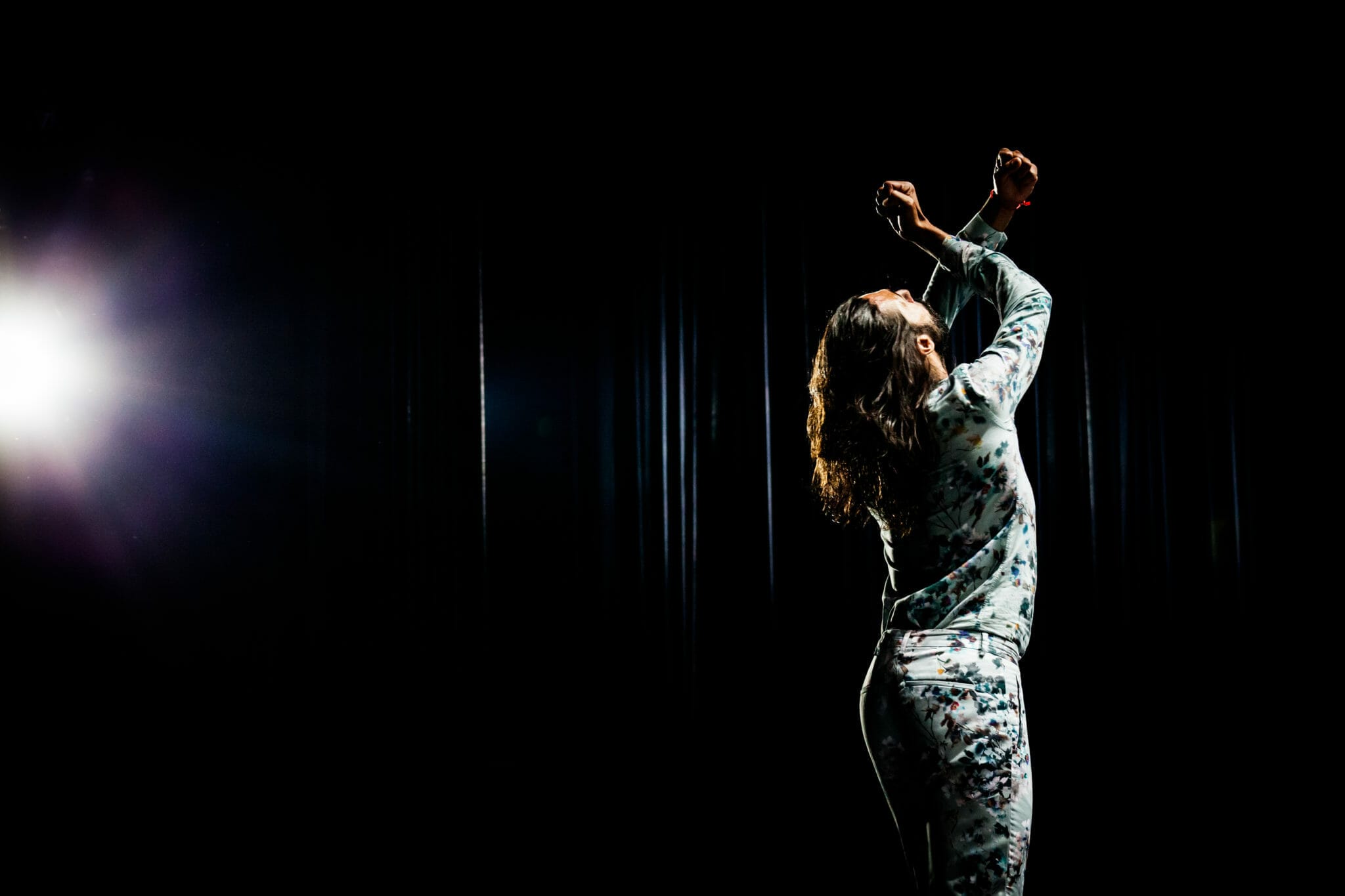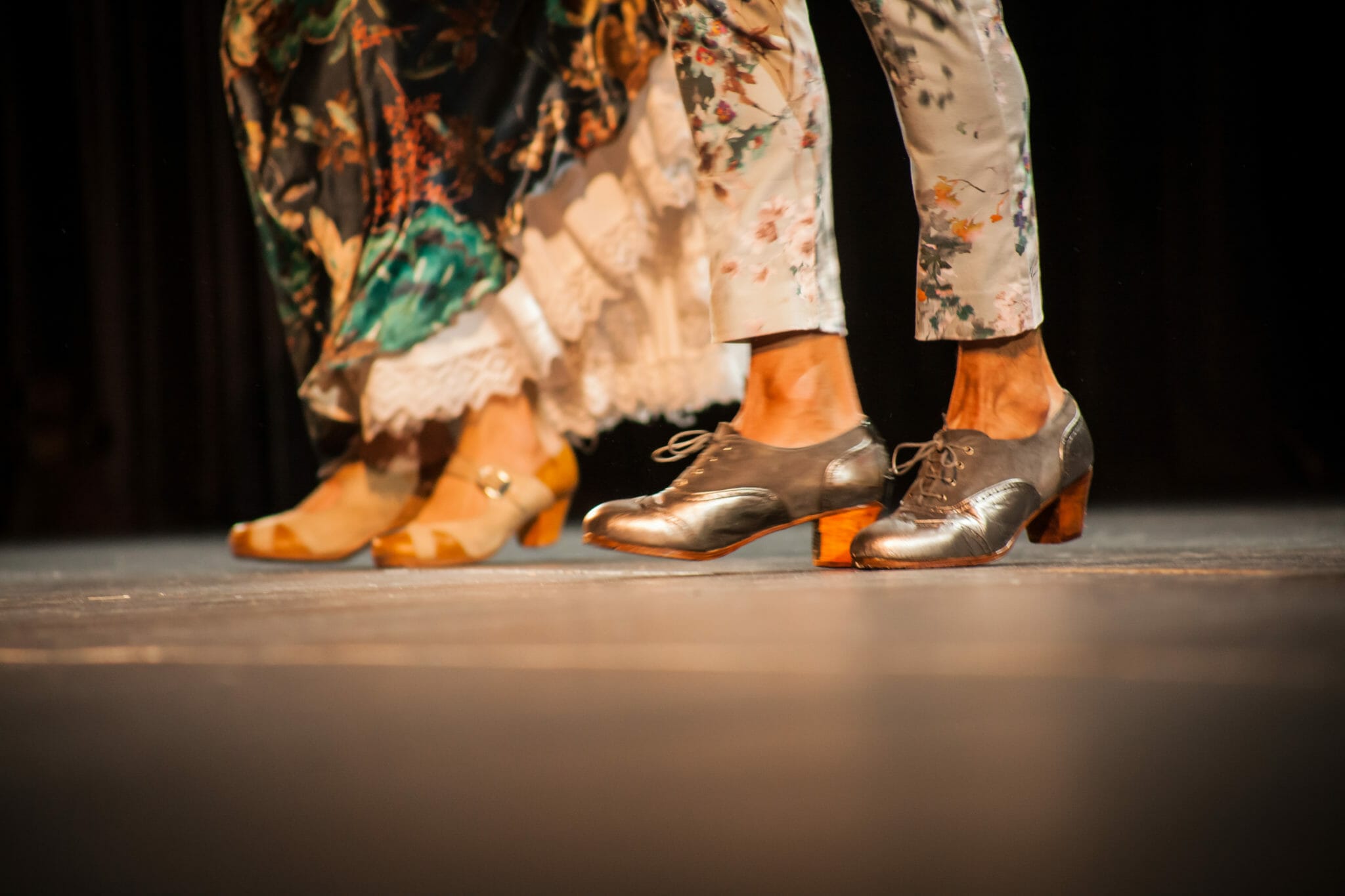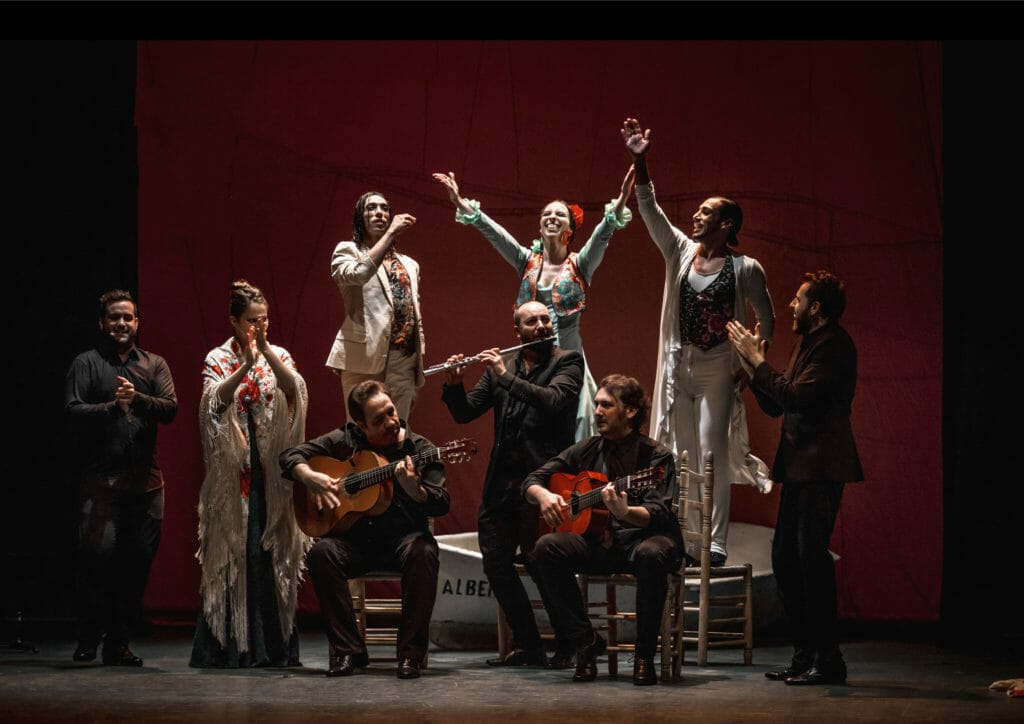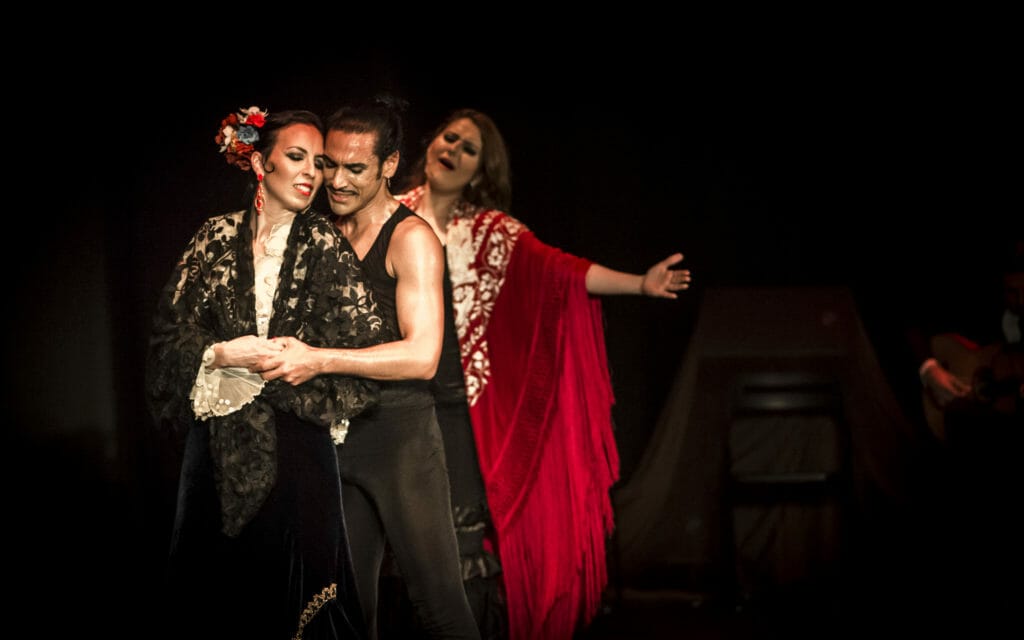Editor's Note: Marisela Tapia, the author of this review is a flamenco dancer, among other genres. This review is part of the Picture This Post series of dance reviews written by dancers and choreographers. To read more - click "Choreographers' Eyes: Dancers Explain Dance."
A Celebratory Evening for the Harris Theater
Last Monday night, the Harris Theater filled with gypsy songs from the mines of hundreds of years ago. Two male singers sang and walked through the seated audience before walking up to the stage. A female singer follows displaying the generous musical range and deeply felt expression of an uplifting cante.
The celebratory evening, intended to be an homage to countries all over the Americas that have had substantial influence on what flamenco is today, had begun.
The opening song then led to dance, of course, as Flamenco dancer Yolanda Osuna’s flowing skirt contrasted with the bright red fan in her interpretation of a flamenco “Guajiras,” inspired from Gypsies traveling to Cuba and bringing back these inspirations to the Iberian Peninsula. The letras or verses, of this Ida and Vuelta (there and back) form depict landscapes of the Island and its people. The expressions of freedom, love, and charisma swelled the theater’s air, especially as Yolanda, and singer Bernardo Miranda interacted in a small duet of dance and cante toward the end of the piece.
Me gusta por la mañana
después del café bebío
pasearme por la Habana
con mi cigarro encendío
y sentarme muy tranquilo
en mi silla o mi sillón
y comprarme un papelón
de esos que llaman diario
y parezco un millonario
rico de la población
“In the morning
after drinking my coffee
I like to walk around Havana
with my lit cigarette
and sit down very relaxed
in my chair or armchair
and buy myself a big sheet of paper
one of those that they call a newspaper
and I seem like a millionaire
rich man of the town”
As Yolanda came on stage with her mantón to dance to yet another celebratory piece in the flamenco form of Alegrias (Happiness) the audience held its breath as it watched her grand floral silk shawl flying in the air and whirling to the compás (beat) and melodies of the musicians behind her.
Eduardo Guerrero showed us his technical skills with everything he had, and his exaggerated movements brought a focus to the flamenco aesthetics unique to flamenco: vueltas quebradas (broken turns), spiraling hips and body shifts and working all the planes of his torso. In the movements he became a cubist painter by personifying flamenco into a character we could contemplate and look at strictly based on movement itself; an attempt to extract flamenco from culture. This is vital since a flamenco artist must find an expression unique to him or her. Flamenco, at its essence, is meant to be a solo art form.
The interweaving textures of Oscar de Manuel playing his flute while behind him were the rhythms of the palmeros, cajón player, and singers, was a visually pleasing experience. His movements reflected every note he played as he traveled across the the stage and his enthusiasm projected across to the entire house.
The singer of Jerez, Manuel Soto, has a voice, that contrasts to Bernardo Miranda’s, with a juxtaposing texture. It was quite interesting to hear these emotional musicians sing together captivating the audience.
From the vantage point of this writer and experienced flamenco dancer, there was some unevenness in the performance quality. Overall, this performance was a great introduction for newcomers to flamenco. It provided a broad array of musical interpretations and the various forms that make up flamenco.
The evening was brought to a close as Yolanda Osuna walked out on the stage in her dazzling evening gown decorated with shining rhinestones. She danced to the flamenco “fiesta” form of bulerias. Her soul showed through the diamonds that adorned her shoulders.
Flamenco Needs Increased Presence in the Chicago Dance Scene
In the end, flamenco is about celebration, about bringing together anyone who is in the present moment. This is exactly how this bright performance full of life, joy, and celebration culminated.
Please hear this Chicago-based flamenco dancer and writer’s plea--- Chicago needs to open its doors and curiosity to flamenco. Our city could become a flamenco center if knowledge and education about this art form continues to grow. With our cultural diversity, gothic structures, well-celebrated neighborhoods, mysterious weather patterns, the bass sounds of hip hop stirring in our streets, and more— flamenco is a perfect match for Chicago. We need more funding for Chicago’s flamenco festival in February, hosted by Instituto Cervantes. And, with more support there could be more shows and workshops throughout Chicago during the festival in June tbrought to Chicagoans by Ensemble Español. VEnues like the Harris Theater provide the kinds of stages where more flamenco ensembles— both local and international —can be featured. Chicago needs more flamenco! We are ready!
For more information on upcoming Flamenco festivals in Chicago the websites for the Instituto Cervantes and Ensemble Español.
Photos courtesy of Las Minas Puerto Flamenco

